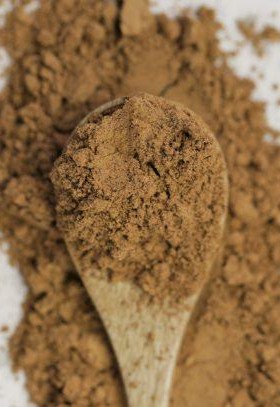What is Melamine Formaldehyde (MF)?
Melamine formaldehyde is a thermosetting resin made by combining melamine (a nitrogen-rich compound) with formaldehyde. It forms a hard, durable material when cured, but in its liquid or partially polymerized form, it can act as a dispersant by stabilizing and evenly distributing particles in a mixture.
Primary Uses of Melamine Formaldehyde (MF) as a Dispersant
While MF is more commonly known for its role in producing resins for laminates, adhesives, and coatings, its use as a dispersant is significant in specific industries where its resinous nature and particle-stabilizing properties are advantageous. Here’s a detailed look at its applications as a dispersant:
1. Coatings and Paints
Melamine formaldehyde is used as a dispersant in the formulation of paints, varnishes, and coatings, particularly in industrial and automotive finishes.
- How It Works: In liquid paint formulations, MF helps disperse pigments and fillers (like titanium dioxide or calcium carbonate) evenly throughout the paint base. Its chemical structure stabilizes these particles, preventing them from settling or clumping during storage or application.
- Why It’s Useful: Even dispersion ensures a smooth, consistent finish when the paint is applied to surfaces like walls, furniture, or car bodies. It also improves the paint’s color uniformity and opacity, meaning fewer coats are needed to achieve the desired look.
- Real-World Examples: Think of the glossy, flawless paint on a new car or the smooth finish on a piece of furniture. MF helps ensure the paint goes on evenly, without streaks or grainy textures. It’s also used in high-performance coatings, like those on appliances or metal structures, where durability and appearance are critical.
- Extra Benefits: MF’s resin-forming properties mean it can also contribute to the coating’s hardness and resistance to scratches, chemicals, or weathering once it cures, making it a dual-purpose ingredient in some formulations.
2. Adhesives Manufacturing
In the production of adhesives, particularly those used in wood products like plywood or particleboard, MF acts as a dispersant for fillers or additives.
- How It Works: MF disperses particles like wood flour, mineral fillers, or pigments within the adhesive mixture, ensuring a uniform consistency. This prevents lumps that could weaken the adhesive bond.
- Why It’s Useful: A consistent adhesive mixture leads to stronger, more reliable bonds in products like furniture, flooring, or construction panels. It also improves the adhesive’s flow, making it easier to apply during manufacturing.
- Real-World Examples: The plywood in your kitchen cabinets or the particleboard in a bookshelf likely relies on MF-based adhesives. The dispersant properties ensure the adhesive spreads evenly across wood layers, creating a strong, durable product.
- Extra Benefits: MF’s role as a resin means it also contributes to the adhesive’s heat and moisture resistance, which is crucial for products exposed to humidity or temperature changes.
3. Textile Treatments
Melamine formaldehyde can be used as a dispersant in certain textile treatments, such as pigment printing or finishing processes.
- How It Works: MF disperses pigment particles in printing pastes or finishing solutions, ensuring they spread evenly across the fabric. It also acts as a binder, helping the pigments adhere to the fabric surface.
- Why It’s Useful: This leads to vibrant, consistent patterns in printed fabrics and improves the durability of the finish, so it doesn’t wear off easily during washing or use.
- Real-World Examples: Fabrics with printed designs, like patterned curtains or upholstery, may use MF to ensure the pigments are evenly applied. It’s also used in wrinkle-resistant or water-repellent finishes for clothing or outdoor textiles.
- Extra Benefits: MF’s ability to form a durable resin film on the fabric enhances the longevity of the treatment, making it ideal for products that need to withstand frequent use or cleaning.
Additional Applications of MF as a Dispersant
Beyond these primary uses, melamine formaldehyde serves as a dispersant in several niche applications where its resin-forming and particle-stabilizing properties are beneficial. These include:
4. Paper and Pulp Industry
In paper manufacturing, MF can be used to disperse pigments or fillers in coatings applied to paper surfaces.
- How It Works: It ensures that materials like calcium carbonate or clay are evenly distributed in the coating slurry, preventing clumping and ensuring a smooth application.
- Why It Matters: This results in paper with a consistent finish, better printability, and a smoother texture. It’s especially important for high-quality papers used in magazines, packaging, or specialty printing.
- Real-World Examples: The glossy coating on a magazine page or the smooth surface of high-end packaging owes its quality to dispersants like MF, which ensure the coating is uniform and free of defects.
5. Plastics and Composites
In the production of plastic composites or molded products, MF can disperse fillers or reinforcements, such as glass fibers or mineral particles, within the plastic matrix.
- How It Works: By evenly distributing these materials, MF ensures the composite has consistent mechanical properties, like strength or flexibility.
- Why It Matters: This is crucial for products like kitchen countertops, electrical components, or automotive parts, where uniformity affects performance and appearance.
- Real-World Examples: Melamine-based tableware (like durable plates or bowls) or composite materials in car dashboards may use MF to achieve a smooth, consistent structure.
6. Inks and Pigment Dispersions
In printing inks, particularly for high-quality applications like packaging or industrial printing, MF can act as a dispersant for pigments.
- How It Works: It keeps pigment particles evenly suspended in the ink, preventing settling or clumping during storage or printing.
- Why It Matters: This ensures sharp, vibrant prints with consistent color, which is essential for things like food packaging, labels, or decorative prints.
- Real-World Examples: The crisp, colorful designs on a cereal box or a product label likely benefit from MF’s ability to keep ink pigments evenly distributed.
Why Melamine Formaldehyde is Effective as a Dispersant
Melamine formaldehyde’s effectiveness as a dispersant comes from its ability to interact with particles and stabilize them in a mixture.
- Dual Functionality: MF acts as both a dispersant and a resin, contributing to the final product’s durability, hardness, or adhesion.
- Stability: It performs well under heat and chemical stress, making it suitable for industrial processes.
- Versatility: It can be tailored for specific applications by adjusting its formulation, such as its degree of polymerization.
- Cost-Effectiveness: A small amount of MF can achieve significant dispersion, making it economical for large-scale production.
Challenges and Considerations
While MF is highly effective, there are a few things to keep in mind:
- Environmental Concerns: Formaldehyde, a key component, can release harmful vapors during production or curing if not properly managed. Modern manufacturing processes minimize this through strict controls.
- Limited Water-Based Use: Because MF is less water-soluble, it’s not ideal for applications requiring high water compatibility, like concrete superplasticizers, where SMF is preferred.
- Formulation Complexity: To work effectively as a dispersant, MF needs to be carefully formulated for each application, which requires expertise and testing.
Conclusion
Melamine formaldehyde (MF) dispersants play a vital role in industries where uniform particle distribution and resin-forming properties are needed. From ensuring smooth, vibrant paints and coatings to creating strong adhesives for wood products and consistent finishes in textiles, MF helps produce high-quality, durable goods we encounter daily. Whether it’s the glossy finish on your car, the sturdy plywood in your furniture, or the crisp print on a product label, MF’s ability to evenly disperse particles while contributing to a product’s durability makes it an unsung hero in manufacturing.

